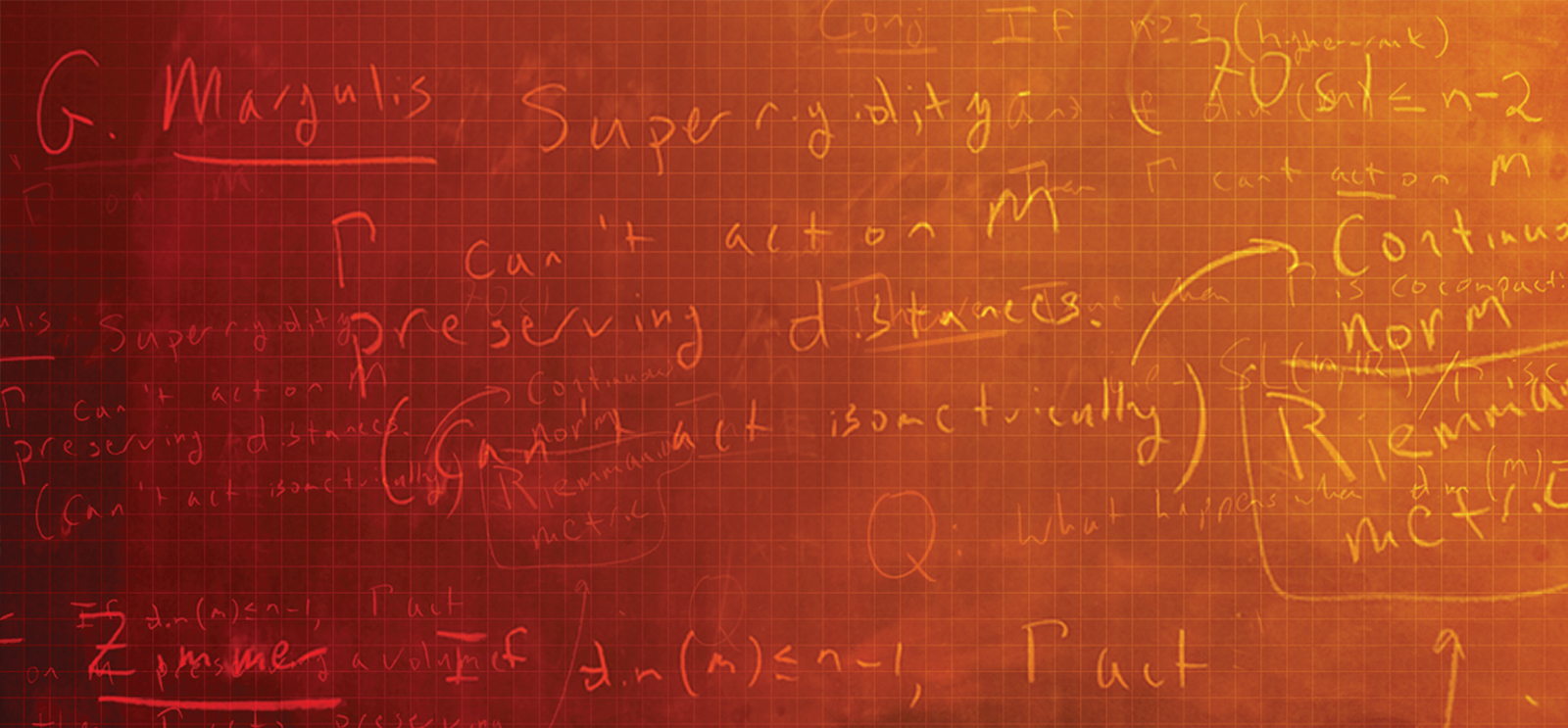
Zimmer called the scholars’ breakthrough “original, powerful, and beautiful.” (Illustration by Michael Vendiola)
Three mathematicians team up to advance Zimmer’s conjecture. Yes, that Zimmer.
When president Robert J. Zimmer arrived at the University of Chicago in 1977 as a Dickson Instructor of Mathematics, he continued the work he had started as a graduate student at Harvard and prolifically published on while a faculty member at the US Naval Academy. This research concerned symmetries, a fundamental concept in mathematics. “The first examples one thinks about are geometric in nature—e.g., rotations of a sphere—but symmetry plays a very important role, and often a surprising role, in a much wider range of mathematical questions,” Zimmer explains.
As a UChicago mathematics professor, he refined this research, which also includes ergodic theory and differential geometry, and developed what is now known as the Zimmer program, a body of work first outlined in the early 1980s. Zimmer’s work was influential in part because, building on the Fields Medal work of mathematician Gregory Margulis, he introduced new connections between disparate subfields, spurring research by several generations of mathematicians.
Work on the Zimmer program had been active for around 25 years when researchers drifted into other areas about a decade ago. “The possible progress on much easier special cases of the Zimmer program was tapped out,” says UChicago mathematics professor Benson Farb, “and everyone was simply completely stuck.”
But work on those problems sprang back to life in fall 2016 with a collaboration between Aaron Brown and Sebastian Hurtado-Salazar, who held the same Dickson Instructor positions Zimmer held at UChicago (Brown is now assistant professor of mathematics), and Indiana University professor David Fisher, SM’94, PhD’99, a former doctoral student of Zimmer’s. They made “what may be the biggest breakthrough ever on the Zimmer program, verifying a large chunk of Zimmer’s conjecture by using a host of new ideas,” says Farb. “The right people with the right ideas can do wonders,” says Zimmer, who met with the three at the Quad Club following the release of their proof.
The collection of symmetries of any mathematical object is known as a group, and “one of the fundamental and very useful questions is, what is the relationship between a mathematical object and the collection of symmetries?” says Zimmer. “What does each one say about the other? This seemingly simple question has immense implications throughout mathematics.”
The Zimmer program looks at symmetry groups of higher-dimensional objects called simple Lie groups and lattices, and the Zimmer conjecture asserts these groups are highly rigid—that is, they appear in only very specific ways that can be explicitly described in great detail. Thus, says Farb, it “posits an essentially complete description of a wide swath of symmetries.”
The Lie groups and lattices that the Zimmer program described, says Hurtado-Salazar, “sit very naturally” in higher-dimensional space. “The philosophy is that they always appear in a specified natural way.” In more technical terms, he adds, “the proof gives certainty to the rigidity properties of these objects.” That was expected by the conjectures, “but in math, if there’s no proof, there’s nothing. Zimmer had intuition and a lot of evidence. Now there’s complete certainty—if there’s no mistake!” Brown adds that the team hasn’t yet proven the full conjecture. “We proved it for one case of objects. We’re now working on the other case.”
“It is particularly gratifying that this was achieved by two young mathematicians at Chicago and a former doctoral student of mine,” says Zimmer. “Their arguments are original, powerful, and beautiful, and I was surprised by some of the particular techniques that were involved.” Now that one case has been proven, he hopes that the other will follow and that the new techniques, when fully worked out, will yield more results. After all, he says, “One only makes conjectures in the hope they will be proven.”
Zimmer says he no longer has time for serious original thought in mathematics, but he follows what others are doing in the area and occasionally has exchanges with colleagues. “I remain totally fascinated by these problems,” he says, “although I seem to have escaped my hourly obsession with them.”
